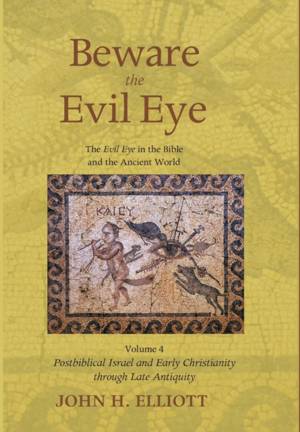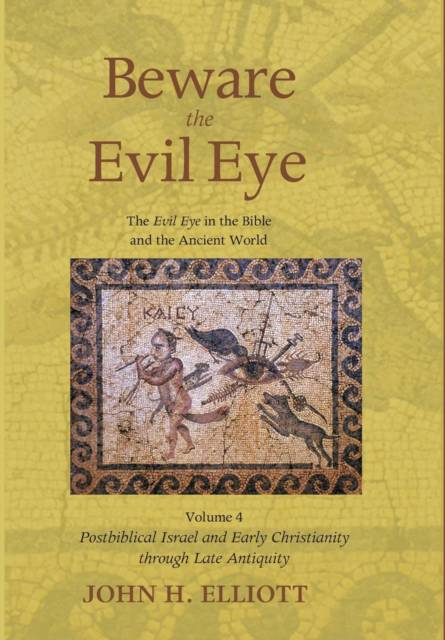
Bedankt voor het vertrouwen het afgelopen jaar! Om jou te bedanken bieden we GRATIS verzending (in België) aan op alles gedurende de hele maand januari.
- Afhalen na 1 uur in een winkel met voorraad
- In januari gratis thuislevering in België
- Ruim aanbod met 7 miljoen producten
Bedankt voor het vertrouwen het afgelopen jaar! Om jou te bedanken bieden we GRATIS verzending (in België) aan op alles gedurende de hele maand januari.
- Afhalen na 1 uur in een winkel met voorraad
- In januari gratis thuislevering in België
- Ruim aanbod met 7 miljoen producten
Zoeken
Omschrijving
This first full-scale study of the Evil Eye in the Bible and the biblical communities has traced in four volumes evidence of Evil Eye belief and practice in the ancient world from Mesopotamia (c. 3000 BCE) to Late Roman Antiquity (c. 600 CE). The fourth and final volume considers the literary and material evidence of the unabated thriving of Evil Eye belief and practice in Israel following the destruction of the Jerusalem temple in 70 CE (chapter 1) and in early Christianity (chapter 2) through Late Antiquity (500-600 CE), with a brief reference to Evil Eye lore in early Islam. Numerous cross-references relate the subject matter of this volume to that of the previous three. A concluding Epilogue (chapter 3) offers some final thoughts on this survey of Evil Eye belief and practice in antiquity and their role in conceptualizing and combatting the pernicious forces of evil in daily life. Beside presenting the first full-scale monograph on the Evil Eye in the Bible and the biblical communities (volumes 3 and 4), the volumes summarize a century of research since the milestone two-volume study of Siegfried Seligmann, Der bose Blick und Verwandtes (1910), and they describe the ecological, historical, social, and cultural contexts within which the biblical texts are best understood. Throughout the study, the Evil Eye in antiquity is treated not as an instance of vulgar superstition or deluded magic, but as a physiological, psychological, and moral phenomenon whose operation was deemed explicable on rational grounds. ""The evil eye does not discriminate. In this the final volume of his monumental study, John Elliott shows, as no one before, that the evil eye was ubiquitous not only in the ancient Near East, but also in postbiblical Judaism and in early Christianity. No matter how much the learned elite thundered against what they considered old wives' tales, they were powerless to break their hold on the people. This is no mean achievement and Elliott's confident command of the literary and archaeological sources will delight readers."" --Robert Louis Wilken, William R. Kenan Jr. Professor of the History of Christianity, University of Virginia ""John Elliott's Beware the Evil Eye is a masterpiece, a stunning work of meticulous research written on a topic that pervades all religions and religious cultures of the Roman Empire. This fourth volume dazzles through its depth of seasoned scholarship, covering not only the evidence of the complexities of the Roman social world, but also examining the writings of all the fathers of the Church, east and west. Particularly impressive is his use and interpretation of material evidence in coins, charms, relief sculpture, and inscriptions. This book is destined to be the classic study on the Evil Eye for the first five centuries of Christianity."" --Vasiliki Limberis, Professor of Ancient Christianity, Temple University John H. Elliott is Professor of New Testament Emeritus at the University of San Francisco. He is the author of Conflict, Community, and Honor (2007).
Specificaties
Betrokkenen
- Auteur(s):
- Uitgeverij:
Inhoud
- Aantal bladzijden:
- 242
- Taal:
- Engels
Eigenschappen
- Productcode (EAN):
- 9781498230742
- Verschijningsdatum:
- 25/04/2017
- Uitvoering:
- Hardcover
- Formaat:
- Genaaid
- Afmetingen:
- 152 mm x 229 mm
- Gewicht:
- 512 g

Alleen bij Standaard Boekhandel
+ 141 punten op je klantenkaart van Standaard Boekhandel
Beoordelingen
We publiceren alleen reviews die voldoen aan de voorwaarden voor reviews. Bekijk onze voorwaarden voor reviews.









